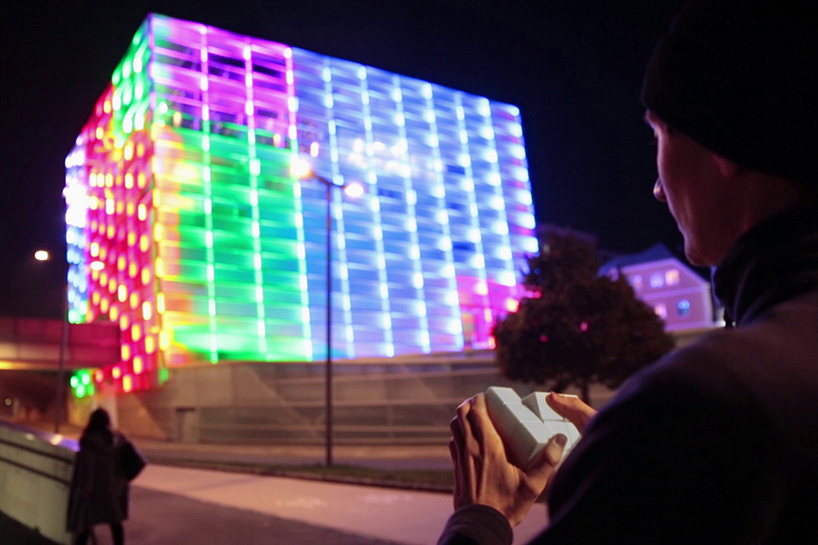
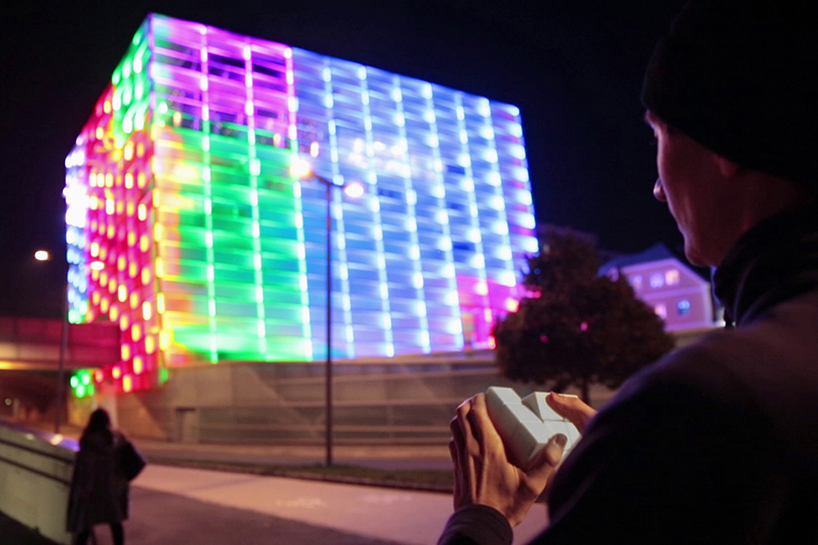
Puzzle Façade, by Spanish artist and designer Javier Lloret, brings the experience of solving a Rubik’s cube to the urban space. Projected against the Ars Electronica building in Linz, Austria, players interact with the large-scale puzzle via a custom-designed interface cube - a handheld electronic version of Rubik’s classic - which keeps track of block rotations and orientation, sending information via Bluetooth to the building. This information correlates as changes in colourful lights on the facade, enabling players to solve the puzzle on a massive scale.
Due to the nature of the building and its location, players can only see two sides of the cube at one time, upping the challenge considerably. However the interface-cube can be rotated and flipped so that all sides can eventually be solved.
This is the second time we've seen Ars Electronica's headquarters used as the backdrop for a multimedia project. Earlier this year, Turkish designer Onur Sönmez’s architectural installation, NOX, allowed users to turn the building’s lights on and off, simply by pulling a cord.
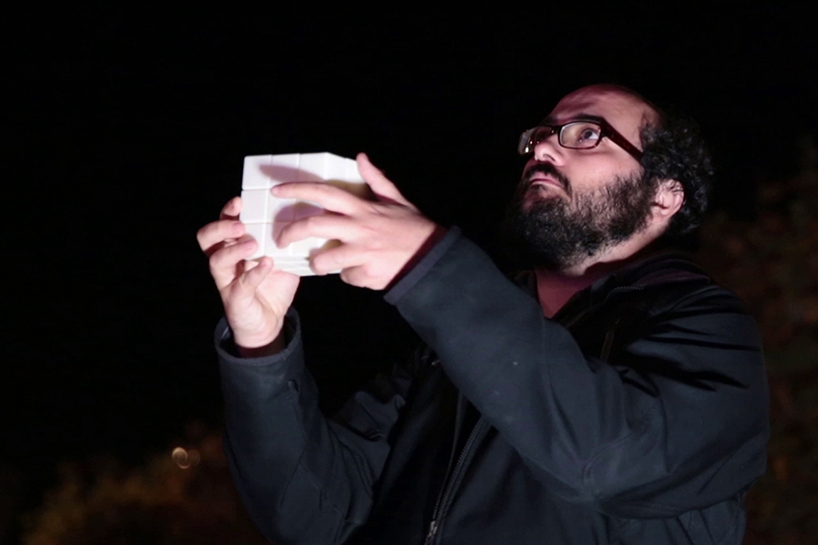
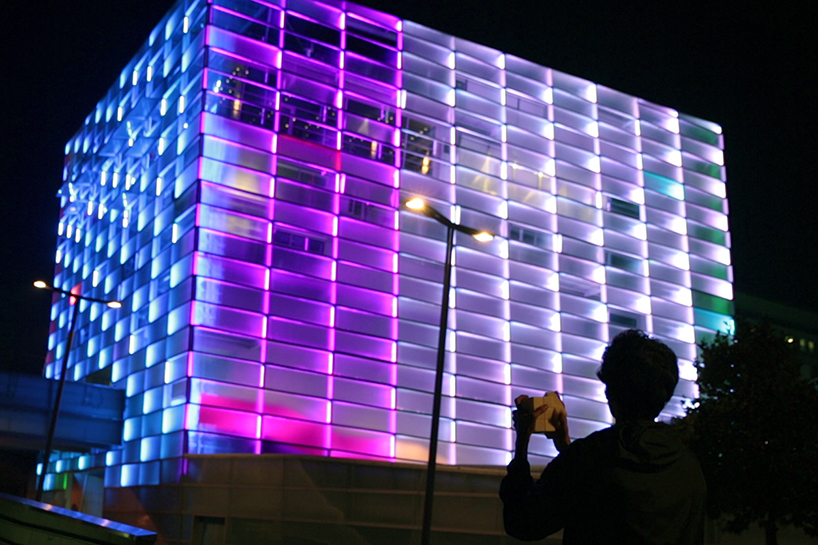
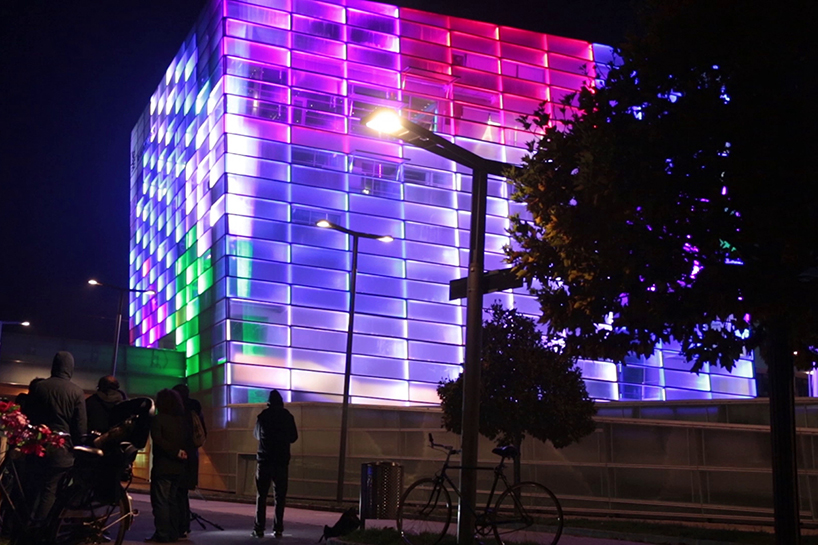
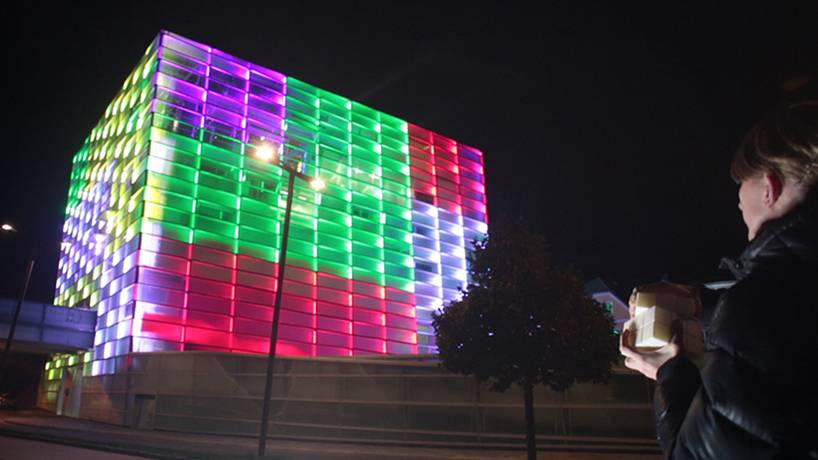
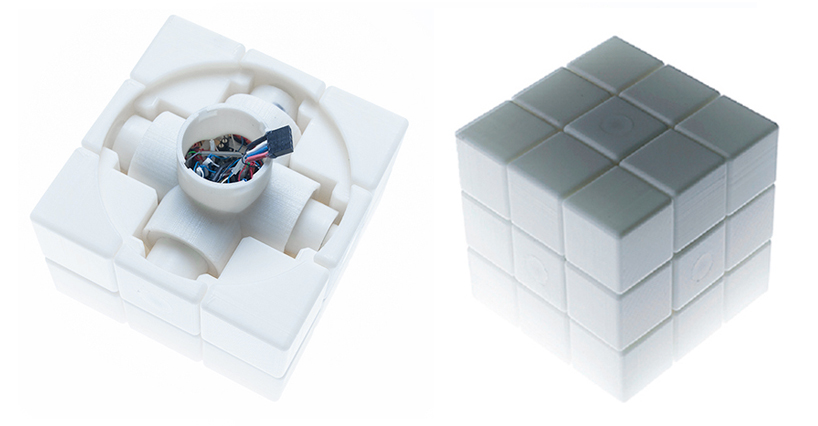


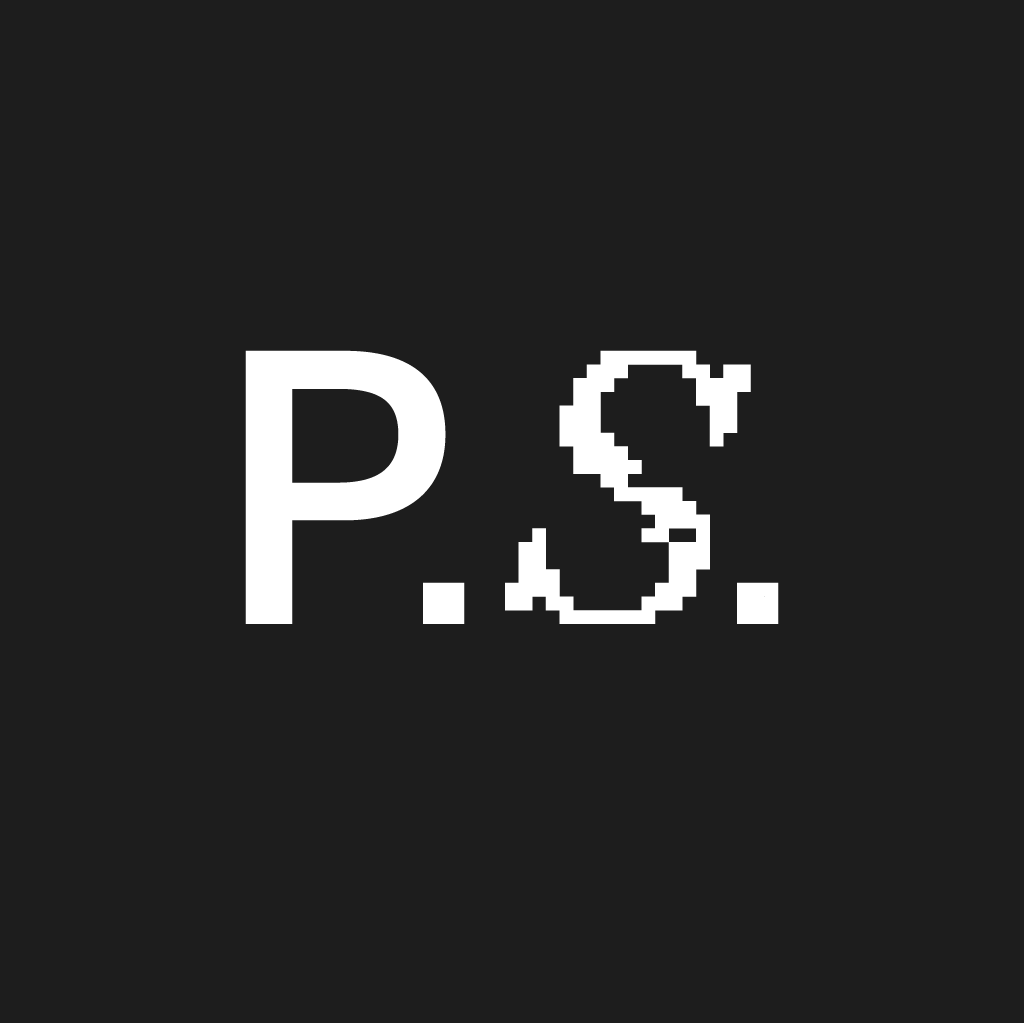
Discussion